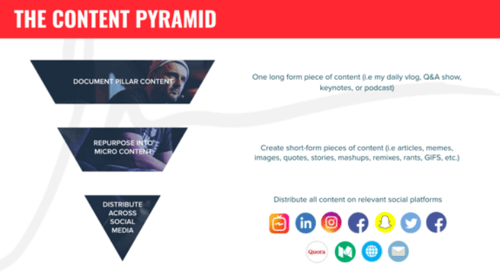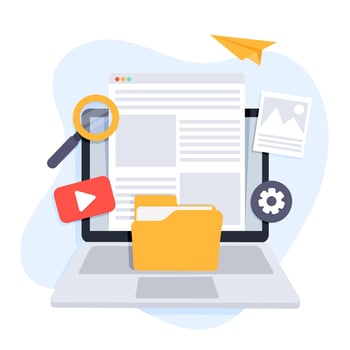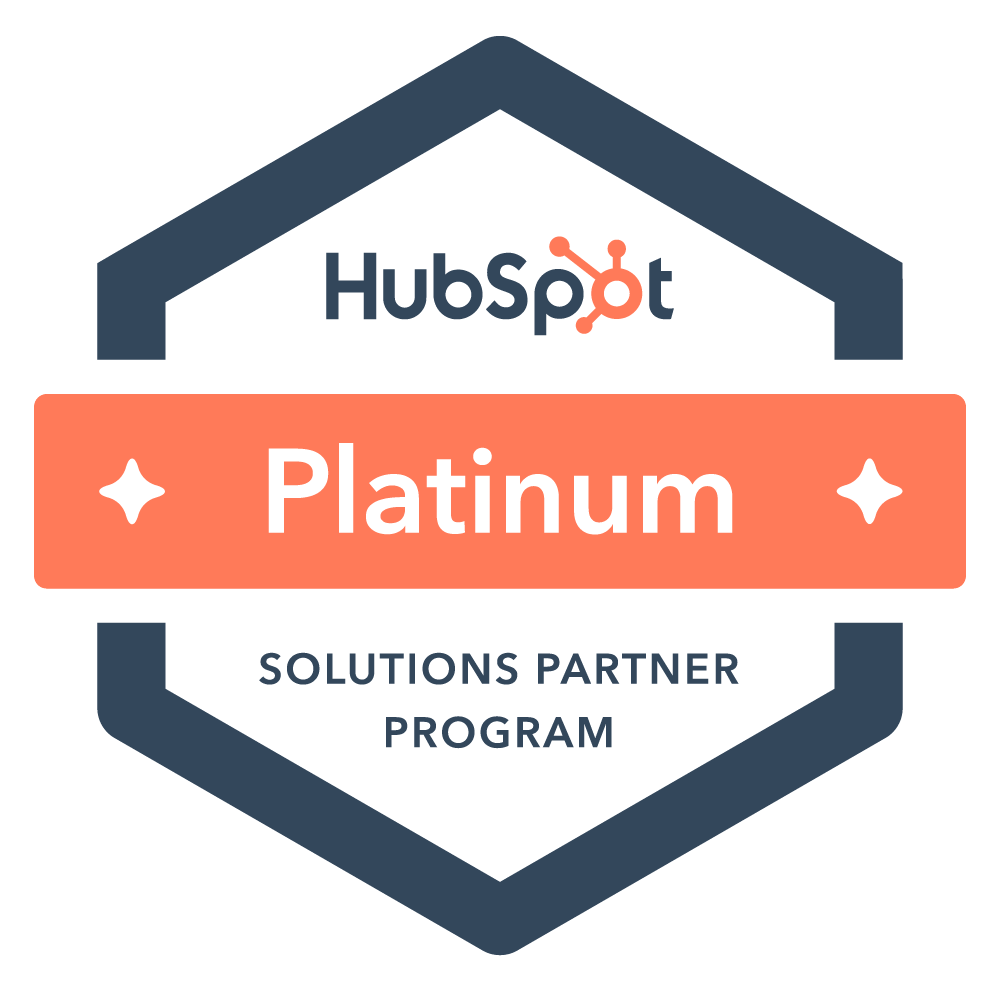![Blog[SM]-8 Content Marketing Ideas to Generate Quality Leads-02](https://blog.launchpadmy.co/hs-fs/hubfs/Blog%5BSM%5D-8%20Content%20Marketing%20Ideas%20to%20Generate%20Quality%20Leads-02.jpg?width=1920&height=1081&name=Blog%5BSM%5D-8%20Content%20Marketing%20Ideas%20to%20Generate%20Quality%20Leads-02.jpg)
In the ever-evolving landscape of digital marketing, content remains king. For businesses seeking to attract and convert high-quality leads, a well-crafted content marketing strategy is invaluable. Quality leads not only boost conversion rates but also foster long-term customer relationships. In addition, 70% of marketers are actively investing in content marketing. The right content and context will attract the right people to your inbound funnel.
However, it can be tricky to generate the ‘right’ mix of content. Today, let’s look at some content marketing ideas that you can try. These ideas will diversify your content library using different formats and mediums. Let’s get started:
Read more: 6 Types of Content Marketing to Nurture Your Inbound Approach
1. Online Webinars & Events
![[LAS]Master the Art of Organic Marketing for Long-Lasting Results-Email&Signature-01](https://blog.launchpadmy.co/hs-fs/hubfs/Events/Launchpad%20Accelerator%20Series/LAS%2008-11%20Master%20the%20Art%20of%20Organic%20Marketing%20for%20Long-Lasting%20Results/%5BLAS%5DMaster%20the%20Art%20of%20Organic%20Marketing%20for%20Long-Lasting%20Results-Email%26Signature-01.jpg?width=400&height=400&name=%5BLAS%5DMaster%20the%20Art%20of%20Organic%20Marketing%20for%20Long-Lasting%20Results-Email%26Signature-01.jpg)
Hosting webinars and online workshops on topics relevant to your industry can position your business as an authority. If you have more resources and budget, you can opt for a physical event which can be better for relationship building. Nevertheless, since the post pandemic, online webinars have become more popular. It’s relatively easy to host webinars now, with so many platforms and options available such as Zoom, Meet, Teams, Webex, and more.
The content of your webinar can be a simple sharing session with several speakers, or a helpful guide to an expert topic. Webinars can help generate leads when you require registration, free or paid. By requiring registration, you capture contact details, especially important ones such as company email addresses.
2. Interactive Content
Interactive content allows your website visitors to actively engage with your content better, resulting in improved user experience and longer web sessions. You can create interactive quizzes or assessments that generate personalised results. Users are more likely to provide their information when they're eager to receive customised insights or recommendations.
Other ideas for interactive content include calculators, interactive maps, or configurators. On social media, you can ask questions of the week or create polls that spark conversations. Inquire about your customers' wants and needs using your content. This type of content engagement is extremely effective, and it will teach you a lot about the audience you need to reach.
Check out our interactive ROI calculator.
3. e-Book and Downloadable Guides
Gated content are online materials that need you to fill in a form before gaining access to them. You can typically find gated content such as downloadable guides and e-books on landing pages, where the aim of the specific page is to convert visitors into leads.
Gated content is a sure way for you to generate leads. To ensure they are quality leads, your form fields have to be relevant to the audience and what you offer. In addition to the landing page and form, the content of your ebook should be relevant as well. It has to be worth the time and data given by your leads. Thus, your gated downloadable materials should offer valuable insights and/or helpful tips or solutions.
4. Repurpose into Micro-Content

Micro-content refers to information that leaves an impression on the audience in a short period of time. The average attention span of an online reader is only 8 seconds. While long-form content such as complete guides and ebooks are helpful, we should not ignore the other segment of short-term, low-commitment visitors.
Examples of micro content include infographics, carousel slides, charts, quotes shared on social media, and many more. They are not necessarily new content developed from scratch. Rather, micro contents are repurposed and adapted from your existing longer form content.
For instance, let's say you have a video recording of an interview that is over 2 hours long. You can upload the full video on your website or your YouTube channel. But you can also edit snippets of the best parts into several shorter videos. You can even take the main points of the video and reformat into written point forms, quotes, articles etc. Micro content introduces your audience to the larger topic and digests it easier for them.
5. Demo Videos & Tutorials
Videos and tutorials are helpful especially in the Consideration stage of the inbound funnel. It helps the users visualise how they can integrate your products or services into their life. For example, we share tutorials on how to use HubSpot Sales Hub so that users can learn how intuitive the software is.
Free Demos are available usually at the sales funnel, but the content can be used as recorded videos, webinars, or a step-by-step guide. This type of content answers a lot of questions the lead might want to ask and provide a useful perspective of how your solution works.
Download Now: Maximise Your Sales Performance Using HubSpot Sales Hub
6. Case Studies & Success Stories
Turn your best customers into advocates! Success stories are a great way to demonstrate how your products or services have solved problems for others. These types of content build trust and attract leads interested in similar solutions. You can use the same content into different formats such as social media, videographics, or part of your website pages. One tip of crafting a good success story is by putting your customer as the main character. What was their problem before, how did they solve it, and how did they work with you to overcome it?
7. Email Newsletters & Drip Campaigns
You can collect email addresses through lead generation campaigns, either through lead magnets such as ebooks or giveaways, surveys, and more. In the age of data, emails are your currency to securing more deals and sales. However, the emails you send to your subscribers have to be relevant and worthy of their time.
Newsletters featuring special promos, events, or updates can be helpful if done right. You can also consider doing drip campaigns to keep your leads engaged and informed, nurturing them towards conversion. Drip campaigns are especially effective for B2B campaigns, as they provide crucial information that nurtures the lead.
8. Resource Library

When you find that you have a collection of various blogs, videos, graphics, and materials, you can consider building and expanding your very own resource library. You can usually find a resource library on a website as its own subdomain. Ours is blog.launchpadmy.co.
Inside a resource library, there should be a variety of valuable content types. This includes:
-
Videos & Tutorials
A common feature for resource libraries is to have a collection of videos created and curated by your brand. Video content is highly shareable, making it an excellent medium to reach new audiences.
-
Expert Interviews & Podcasts
Other than videos, there could be podcasts or audio recordings owned by you. You can create podcasts with persons of interest, someone you work with, or a subject matter expert. Getting an expert or well-known person to interview not only provides valuable insights but also attracts listeners eager to learn from renowned professionals.
-
Infographics & Blog Articles
Visual content, such as infographics, is highly shareable and can be used to simplify complex topics, making it attractive to a broader audience. Of course, we must not forget to curate and create articles and blogs as well. Consistent blogging, paired with SEO optimization will attract organic traffic and give more fuel to your inbound funnel.
Conclusion
Every marketing team relies on a steady flow of quality leads. Hopefully with these content marketing ideas, you can build lasting relationships with your audience, ultimately driving growth and success for your brand. Don’t forget to optimise your content, refine your content strategies, and stay updated with evolving industry trends to maximise your content marketing's lead generation potential.
Take the opportunity to do something new whenever you can!



